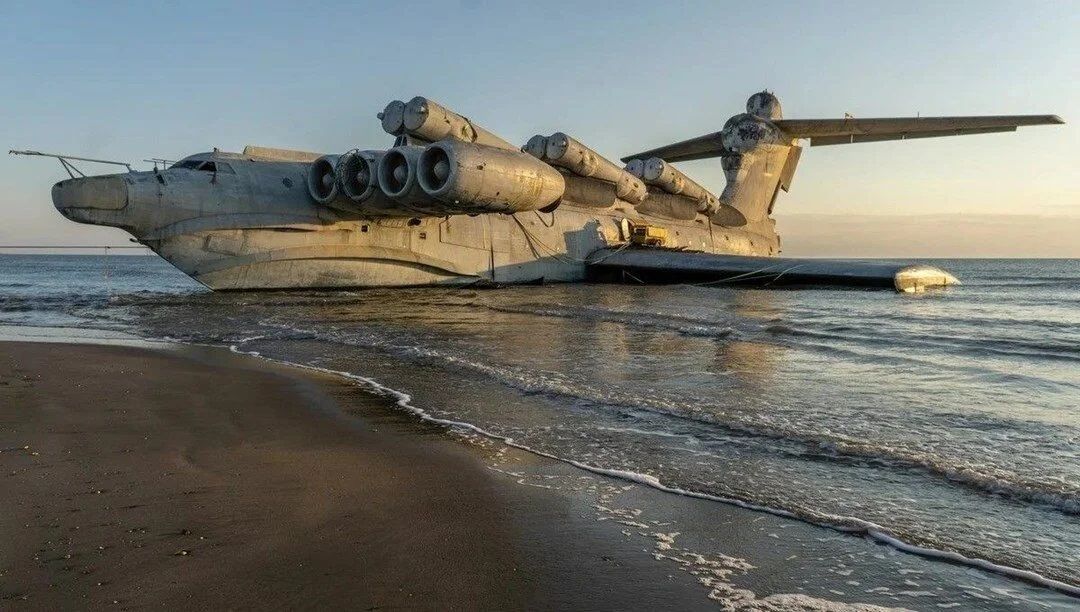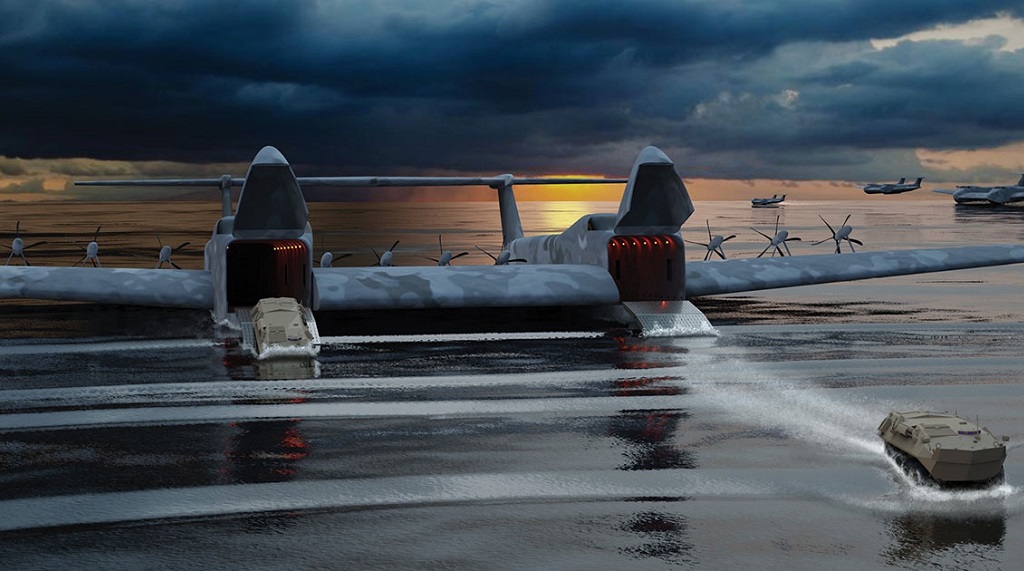VIDEO:
In 2022, DARPA announced an ambitious project: the development of an aircraft known as the Liberty Lifter, designed to match the size and capacity of a C-17 Globemaster III transport aircraft, while being capable of lifting over 100 tonnes of payload. This feat is quite remarkable, considering that a C-17 can handle only around 77 tonnes on its best day. What’s even more astounding is that the Liberty Lifter is designed to be a seaplane with a ferry range of 6,500 nautical miles (approximately 7,500 miles or 12,000 kilometers), enough to fly from the North Pole to the Equator with some distance to spare.
The secret behind this impressive performance is what’s known as the “ground effect” or “wing-in-ground effect.” This is an esoteric aerodynamic phenomenon that was at the center of one of the great mysteries of the Cold War.
In the late 1960s, American spy satellites monitoring the Soviet Union witnessed a massive aircraft soaring over the Caspian Sea. Dubbed the “Caspian Sea Monster” by the intelligence community, this aircraft, weighing over 500 tonnes, had thick, stubby wings that seemed incapable of supporting its massive size in flight.
The key to this aircraft’s capabilities was flying at extremely low altitudes, thus exploiting ground effect. When an airplane flies very close to the ground, or better yet, water, it creates a cushion of air trapped between itself and the ground. As a result, drag is reduced, and lift is increased, allowing the aircraft to have smaller wings, carry heavier loads, or a combination of both.
This is precisely why the Caspian Sea Monster could be so enormous and still fly with stubby wings. Unfortunately, such ground effect craft have severe limitations, particularly working best over a calm water surface and struggling with rough seas.
DARPA’s Liberty Lifter project aims not only to overcome some of these limitations but also to advance the technology further. They plan to create an aircraft that can transport heavy loads over great distances, take off and land on water without the need for runways, be constructed using cost-effective boat-building techniques, and operate for extended periods without maintenance.
Moreover, it must be capable of taking off and landing in Sea State 4, where waves can reach as high as 8.4 feet (2.5 meters), and operate on water in Sea State 5 with waves up to 13.1 feet (4 meters). It should also function as a low-altitude aircraft capable of flying out of ground effect to an altitude of 10,000 feet (3,000 meters) above sea level.
For Phase 1 of the project, Aurora Flight Sciences, along with Gibbs & Cox and ReconCraft, is developing a craft that resembles a traditional flying boat with a single hull, high wing, and eight turboprop engines. Simultaneously, General Atomics and Maritime Applied Physics Corporation are working on a more exotic twin-hull, mid-wing design for improved water stability and seakeeping, with propulsion provided by 12 turboshaft engines.
Phase 1 is expected to last 18 months, with six months dedicated to conceptual design work and another twelve months for design maturation. The results will be submitted for a preliminary design review and test/demonstration planning reviews three months later. This will be followed by Phase 2 in 2024, during which the successful design will advance to the stages of design, manufacturing, and demonstrating a full-scale Liberty Lifter X-Plane.
DARPA Liberty Lifter Program Manager, Christopher Kent, expressed excitement about the program’s launch, looking forward to collaborating closely with both performer teams as they refine their design concepts during Phase 1. “The two teams have taken distinctly different design approaches that will allow us to explore a relatively large design space during Phase 1,” he said.










